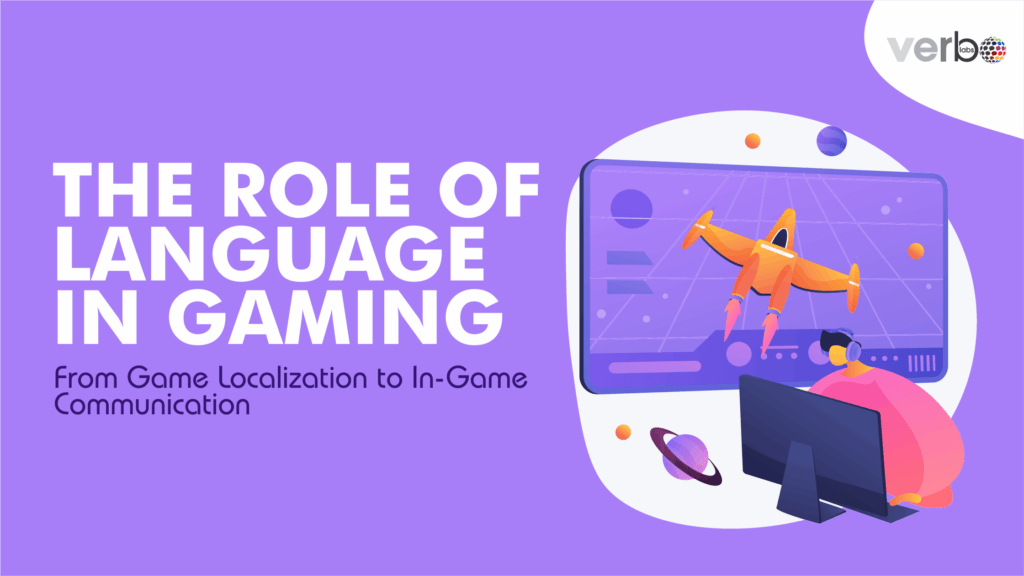After the rise of globalization in the early 1990s, the online gaming industry increased its pace. It’s been over three decades, and currently, the online gaming industry has ballooned to a staggering INR 19071.50 billion. Over the years, this industry has seen multiple changes in advanced technology, consumer preferences, and monetization models. In the entertainment sector, gaming is among the most preferred modes of entertainment, especially for people 18-35 years of age. With the gaming industry securing a significant portion of the entertainment industry worldwide, it has become crucial to take care of all the elements of gaming to flourish in the field.
One of the new and relatively essential elements is localization in gaming. With game localization, video games can travel across borders as a cultural and entertainment product. Language is crucial in both game localization and in-game communication as it comprehends the game’s content and promotes social connections among players.
What is Game Localization?
Game localization is tailoring a video game’s content according to a particular target audience or geographic location. The game’s text, dialogues, menus, and instructions must be translated from one language to another, and other parts must be changed to guarantee cultural appropriateness and appeal to the intended audience.
Beyond simple translation, game localization takes into account several cultural, linguistic, and technical factors. The following are some crucial elements of game localization:
- Language Translation
- Cultural Adaptation
- Audio Localization
- User Interface and User Experience (UI/UX)
- Legal and Regulatory Compliance
- Quality Assurance
Let’s read in-depth about these elements essential in Game Localization
Language Translation
In the localization of any software or, in this case, any game, translation is the first step to perform. It is the most critical element in game localization and includes translating in-game dialogues, subtitles, menu options, tutorials, and other written content. Game developers need to be extra careful while translating the in-game content because even a single error can affect the entire meaning of the context.
Cultural Adaptation
After taking care of the translation, the next important element is transforming the original content according to the cultural preferences of the region where the game is about to launch. Cultural adaptation in localization also involves adapting the game’s content to the target market’s cultural importance, norms, and sensitivities. This may include modifying character names, references, humor, and visuals to resonate with the local audience and avoid cultural misunderstandings or offences.
Audio Localization
In addition to text translation, audio adaptation is frequently needed for game localization. In order to make the game completely accessible and immersive for players, this may include recording new voice overs or employing local voice actors to dub conversations in the target language.
User Interface and User Experience (UI/UX)
The game’s user interface, which consists of menus, buttons, icons, and navigational components, is also localized. These components need to be modified to match the target language’s cultural norms, text length, and writing orientation. The modifications can also include the alteration of visual components which match the targeted region.
Legal Compliance
Ensuring compliance with regional laws, rules, and rating systems must be a part of localization. For a region to adhere to legal or cultural requirements, content that is allowed in one nation may need to be changed or eliminated. Game developers must know the legal compliances to avoid future complications.
Quality Assurance
At the time of launching the games or bringing up any updates in the game, developers need to find and fix any translation mistakes, linguistic challenges, or technical issues. During the adoption process, multiple-minute problems can arise. And because of these possible issues, localization initiatives should go through rigorous testing and quality assurance processes.
Strategy Used in Game Localization
Game developers understands that there is no “one size fits all” strategy for game localization. Instead, each hame requires a customized approach. This approach, known as a foreignization preserves the centrl central characters and unique aesthetics ensuring the same ga,ming experience. Therefore, to create the same gaming experience in a localized version for such a multifaceted product, game localization involves deliberate decisions on a game’s technical and cultural aspects. This is in contrast to a standardized approach applied to all games regardless of the game genre or the creators’ original intention.
Sometimes, the game creator adapt their designs to adapt to fit the target cultures, resulting in “deep localization.” It is evident that while creating a strategy for game localization, developers need to be aware of the target market’s requirements and develop a plan accordingly.
In-Game Communication
Communication among players within the game is facilitated by language. In order to allow players to strategize, cooperate, and socialize, multiplayer games frequently rely on real-time communication, including voice chat or text-based messaging systems. Players from various linguistic backgrounds can collaborate and communicate thanks to efficient in-game communication technologies.
Localization includes in-game chat systems, user interfaces, and social elements to ensure that users of different languages can access and use them. The availability of localization support for these elements improves inclusivity and fosters cross-player contact because language hurdles might impede effective communication. Here are some common forms of in-game communication:
- Text Chat
- Voice Chat
- Emotes
- Ping Systems
- Social Features
- Global/Local Chat
Let’s read in-depth about these forms of in-game communication
Text Chat
Many video games have a text-based chat feature that lets users compose and send messages to other players. Text chat helps coordinate teams, have casual conversations, and carry out specific in-game tasks like exchanging things or setting up events. Text chat helps to improve engagement among the players and increase entertainment.
Voice Chat
Players can converse utilizing their microphones and speakers/headsets through voice chat. It facilitates real-time, voice-based communication between players, making coordinating efforts, issuing orders, or communicating socially simpler. In cooperative games, voice chat can be constructive when quick and effective communication is required.
Emotes
Emotes are pre-set animations or gestures that players can trigger to convey specific emotions or actions. These can range from simple gestures like waving or clapping to more elaborate activities like dancing or performing detailed in-game animations. Emotes are often used to express feelings, celebrate victories, or communicate non-verbally when voice or text chat is unavailable.
Ping Systems
Ping systems are features that some games provide that enable players to rapidly and easily share specific information with their teammates without the need for voice or text communication. To facilitate effective collaboration and communication, players can place markers on the game’s map to denote the locations of opponents, attractions, or objects.
Social Features
Many video games have social components, including friend lists, guilds and clans, and private messaging services. These elements enable player involvement and communication outside of the immediate gameplay environment, enabling the formation of communities, the management of groups, and the maintenance of relationships.
Global/Local Chat
A local or global chat function in certain games lets players converse with other players nearby or across the entire game world. Local chat is frequently used for quick interactions and regional coordination, whereas global conversation can promote a sense of community and offer a forum for more extensive discussions.
Conclusion
The above content shows that language is vital in localization and in-game communication. For game publishers and developers to reach a global audience, accurate game localization is vital. It will enable players from beyond geographical boundaries to completely comprehend and enjoy the game in their native tongue while also maintaining the intended gameplay experience and cultural context. If you also wish to have an accurate game localization, you can choose Verbolabs to be your partner in this journey of success.



